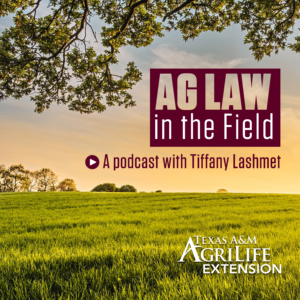The ownership of forty-two acres was in dispute in Best v. Thornton, a case involving claims of adverse possession when a barbed-wire fence was built off the property line decades ago.

Photo by Arsh Khan
Background
In 1975, Randolph Best’s grandmother deeded him a one-third undivided interest in two contiguous tracts of land. The remaining two-thirds undivided interest were deeded to the remaining Appellants in this case. One tract contained 322 acres and the other contained 320 acres, for a total of 642 acres. In 2020, a survey was conducted in conjunction with the sale of the property. The surveyor, using meets and bounds in Randolph’s deed, determined the two tracts contained a total of 599 acres. Randolph requested the surveyor complete a second survey using the existing fence line around the property instead of the metes and bounds description. This second survey showed the land containing 642 acres under fence.
Best and the other Appellants brought suit against Mary Sue Thornton, the record owner of the adjoining tract of land, claiming they acquired title to the 42 acres under their fence by adverse possession.
At trial, the court found while the Appellants have used the 42 acres openly and exclusively for grazing cattle and hunting leases for over 50 years, they failed to prove adverse possession. There was no evidence as to the reason for the original fence, who installed it, when it was installed, and the only open and obvious use was grazing cattle.
Appellate Court Opinion
The Waco Court of Appeals affirmed. [Read Opinion here.]
Adverse possession law
To prove adverse possession, a party must show possession that is actual, visible, continuous, notorious, distinct, hostile, and of such character as to indicate unmistakably a claim of exclusive ownership. A tenant’s occupancy of land can constitute the landlord’s possession.
When dealing with an adverse possession claim involving grazing and fences, the issue of how to categorize the fence often arises. Fences are classified as either “casual fences” or “designed enclosures.” If the fence existed before the claimant took possession and the claimant failed to demonstrate the purpose for which the fence was built, then the fence is presumed to be a “casual fence” and generally does not prove adverse possession. This is only a presumption, however, and may be rebutted if the defendant offers evidence the fence is actually a “designed enclosure.” A casual fence can become a designed enclosure when there are “substantial modifications’ that change the character of the fence. An exception to the enclosure requirement exists if the claimant can prove sufficient non-grazing use of the land that the true owner would have notice of the hostile claim.
Casual Fence
The court stated this case turns on the question of whether the existing barbed-wire fence Appellants claim is the boundary between their property and Thornton’s is a casual fence or a designed enclosure. There was no dispute the fence has been in the same place for decades with testimony it had been there since 1965. Randolph testified to helping the Thornton family repair the fence in 1963 when they “shored up” the fence line and fixed broken wires. The fence was repaired again by Appellants’ tenant and a Thornton family employee who had leased the land beginning in 2008. The tenant testified he put up new wire, put in new posts, and tied wire back together where needed.
This fence, the court held, is a classic casual fence. The fence existed before Appellants took possession of the property and they provided no explanation for the purpose for which it was built.
Designed Enclosure
Appellants argued that by repairing the fence by replacing wires and posts, it became a designed enclosure. The court rejected this argument. “Repairing or maintaining a casual fence generally does not change a casual fence into a designed one.” These repairs did not modify or change the nature of the fence. Further, the evidence showed the repairs that were made were a joint effort between the Appellant and Thornton. Working together on the fence with the landowner is not indicative of an adverse possessor attempting to make the fence a designed enclosure. The court contrasted this situation with Butler v. Hanson, where the claimant did change the character of the fence to a designed enclosure by adding a net fence to the original three-strand barbed wire fence.
Acquiescence
Appellants asserted Thornton knew where the fence was located, but never complained about it encroaching on her property. They also pointed to the fact she shared in responsibility for fence repairs and claimed these two things show a belief or acquiescence by Thornton that the fence was the boundary line.
Thornton disagreed. Thornton explained at one time, all of the land was owned by William Andrew Bonner who put fences wherever he wanted them. She testified she knew where all of the fences are located, but did not know who put them there or why. She was aware the location of the fences does not match the metes and bounds descriptions of property boundaries. She stated fences are not boundaries. Instead, they were placed to suit the fence builders, to keep cattle in and hogs out, and to deal with the terrain on the ground. She testified because this was all family land and there are fences all over, the exact boundary is unknown until it is surveyed by the metes and bounds.
The appellate court found the trial court was entitled to find Thornton’s explanation logical and credible. Her testimony supported the trial court finding this was a casual fence.
Additional Uses of the Property
Appellants argued grazing was not the only use of the property and, therefore, they did not have to show they designedly enclosed the land. They relied on hunting leases, the existence of an oilfield road, oil and gas leases, and drilling as well.
With regard to hunting, Appellants leased the land to a tenant who then leased the property to hunters. The tenant testified he leased the land to deer hunters, but did not specify when or how often hunters occupied the land. Evidence of sporadic hunting was not sufficient to establish a claim of adverse possession.
With regard to the oilfield uses, these were also insufficient. There was no evidence of wells drilled on the property or evidence of any oil and gas lease identifying the land. There was testimony about an oilfield road, but the record was unclear on where it was located. None of this showed sufficient use to qualify for adverse possession.
Appellants asserted they and their predecessor in title paid property taxes on the disputed land since 1935. The court held “payment of taxes is some evidence of adverse possession, but it is insufficient to establish adverse possession as a matter of law and it is not a visible appropriation of the property.”
Conclusion
Thus, the appellate court held the trial court’s finding that there was no adverse possession was not against the great weight and preponderance of the evidence. The court affirmed the trial court ruling.
Petition for Review
Appellants filed a Petition for Review with the Texas Supreme Court, but it was denied in August 2024.
Key Takeaways
This case offers several important considerations.
First, if you ever build a fence off of the boundary line, do something to memorialize this and record it in the deed records. This will avoid a situation where no one knows who built the fence, when it was built, or why it is off the boundary. Doing a simple boundary line agreement or even an affidavit in the deed records with this information might be helpful. If you currently own land with fences off the boundary line, you should consider seeking a boundary line agreement with your neighbor to avoid issues in the future.
Second, it is very difficult to prove adverse possession when the use is grazing livestock unless the claimant made substantial modifications that changed the character of the fence or otherwise made a clear claim of ownership of the property. Here, replacing posts and wire was not sufficient to prove a designed enclosure and, without doing so, even cattle grazing for decades was not enough to prove adverse possession.
Third, note that paying taxes, alone, will not satisfy an adverse possession claim. Just because the plaintiffs here had paid taxes for 90 years did not satisfy the qualifying open and notorious use to prove adverse possession.
To learn more about adverse possession read Chapter 7 of our Owning Your Piece of Texas handbook or listen to this podcast episode with Amber Miller.












